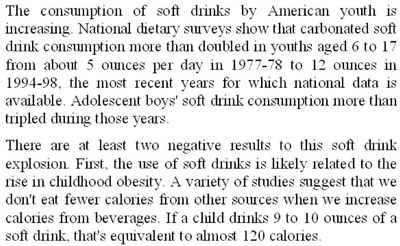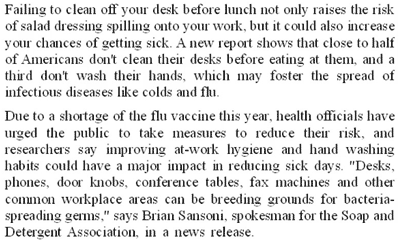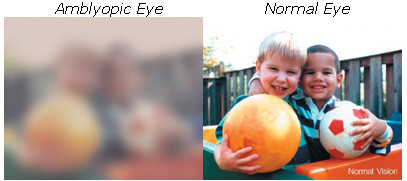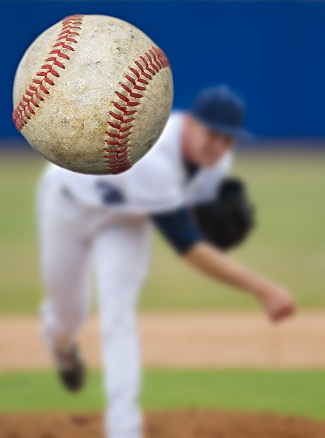Conditions Treated At Our Castle Pine & Colorado Springs Offices
Eye Teaming
 CONVERGENCE INSUFFICIENCY
CONVERGENCE INSUFFICIENCY
Convergence Insufficiency is defined as the inability of your two eyes to work together comfortably at near point. When we read, our eyes must turn in (converge) together at a desired near-point object (i.e., book). Simultaneously, each eye must focus for a required target distance. These two functions are linked together. Stress on one function causes stress on the other. Normally, as your eyes turn in to focus on close-range material, increased focusing and eye aiming is required. When you look at an object up close, your two eyes cannot come together comfortably and efficiently to view the object. This is known as convergence insufficiency.
CONVERGENCE EXCESS
Convergence excess is defined as the excessive “turning in” of your eyes. When we read and perform other activities at near-point, our eyes must turn in (i.e., convergence) accurately at a desired near-point object while simultaneously each eye must focus for the specific target distance. If your two eyes turn in more than necessary when you look at a specific object, this increase in convergence is generally associated with an increase in focusing power. Focusing and convergence are two separate functions which are linked together. Excessive stimulation of one of these skills produces excessive unwarranted stimulation of the other.
SYMPTOMS
Possible symptoms include double vision, blurred vision, and headaches. Typically, you may find it difficult to perform your near point work (i.e., reading, writing, school work, etc.) comfortably for extended periods of time and quite often you may find yourself avoiding all near point activities. In addition, your depth perception may also be reduced.
TREATMENT
The treatment for convergence issues is vision therapy. Specifically prescribed eye therapy can teach you to utilize your eyes comfortably and efficiently. After you receive this therapy, glasses may be needed. You will ultimately be able to read and perform near point activities comfortably without fatigue.
Focusing
 UNDER FOCUSING
UNDER FOCUSING
When your eyes look at specific objects up close, such as a book or a set of cards, each eye must focus for the specific distance at which the object is held. The closer an object is held, more focusing power is necessary to see the object clearly. Difficulty focusing your eyes can result in distance and near vision blur, headaches, eye strain, reduced acuity, double vision, an inability to perform near visual tasks, an inability to change focus and general fatigue. The causes of accommodative problems include a lack of ability to sustain focus, which can be combined with uncorrected refractive errors, or eye-muscle instabilities, overstimulation of the accommodative system with prolonged near work, or difficulty shifting focus from one point to another. As part of the normal aging process, the ability to change focus decreases with age. This is a normal process referred to as presbyopia, initially affecting most people at age 35 to 45. In certain instances, focusing problems can be the result of trauma, neurological diseases or side effects of certain medications.
OVER FOCUSING
When our eyes look at a specific object up close such as a book or a set of cards, the eye muscles must focus for the specific distance at which the object is held. This process is called accommodation (focusing). In certain cases, there is an overstimulation of the accommodative (focusing) system with prolonged near work. There is generally an intermittent blurring of distance vision following near visual tasks.
SYMPTOMS
Symptoms can include difficulty performing near vision tasks, blurred vision at distance and near, the holding of reading material or other work closer than expected, headaches, eye fatigue and possible double vision.
TREATMENT
Treatment for an accommodative spasm includes the prescription of lenses to reduce the overstimulation combined with specifically prescribed visual therapy procedures. If this condition is left unresolved, functional myopia or a significant eye alignment problem may result. Treatment for accommodative difficulties can include specially prescribed lenses, which supply the focusing power necessary to see clearly. In many cases, specially prescribed visual therapy may be needed to teach the eyes to change focus comfortably. Frequently, both therapy and glasses are necessary.
Tracking
 OCULO-MOTOR DYSFUNCTION
OCULO-MOTOR DYSFUNCTION
In order for your eyes to work efficiently, they must be able to follow moving objects (pursuit movements), and must be able to jump from one object to another (saccadic eye movements). Proper eye movement skills are needed for reading and writing. An “oculo-motor dysfunction” is the ophthalmic terminology for reduced eye movement skills.
People with inadequate eye movement skills can lose their place while reading, can omit words or letters when reading or writing, or can reverse words or letters. A possible cause of being considered a “slow reader” or having academic disabilities is poor eye movement skills.
SYMPTOMS
Symptoms can include headaches, blurred vision, double vision, dizziness and eye fatigue. Occasionally, neurological conditions such as stroke can affect eye movement skills.
TREATMENT
Treatment includes specially prescribed visual therapy eye techniques that develop the control of eye movements. Techniques utilizing feedback are important, since feedback lets the patient know if he or she is performing appropriately.
 Eye Turn
Eye Turn
ESOTROPIA
Esotropia is a condition in which one eye turns inward resulting in the eyes pointing in different directions. When this occurs the person will either see double, or the brain will have to suppress or ignore the information from one eye. This can cause poor visual skills, poor visual clarity, and also be cosmetically unacceptable.
EXOTROPIA
Exotropia is a condition in which one eye turns outward resulting in the eyes pointing in different directions. When this occurs the person will either see double, or the brain will have to suppress, or ignore the information from one eye. This can cause poor visual function and also be cosmetically unacceptable.
HYPERTROPIA
Hypertropia is a condition where one eye turns upward or downward. In other words, one eye is higher, or lower than the other, and as a result, your eyes are not properly aligned with each other. One eye will point at the object seen while the other eye points in a different direction.
CAUSES
There are many possible causes of esotropia, including muscle problems, optical deficiencies, difficulty using both eyes together comfortably, anatomical abnormalities, diseases, and trauma.
SYMPTOMS
Symptoms can include double vision, fatigue, headaches, a wandering eye inward, or reduced acuity in the eye that is turning.
TREATMENT
The treatment for esotropia varies depending on the cause of the eye turn but includes vision therapy involving prisms, lenses and specifically prescribed techniques will usually treat this problem successfully. Frequently, glasses may also be needed to help align the eyes comfortably.
Lazy Eye
AMBLYOPIA
 Amblyopia, or lazy eye, is a loss of vision at both distance and near. It is usually present in one eye only and there is no disease causing the visual loss. Lazy eye is commonly caused by the inability to use both eyes together as a team (strabismus). Other causes of amblyopia include large amounts of uncorrected optical errors, dietary insufficiencies, malnutrition, toxic causes, such as excessive alcohol or tobacco, anatomical or pathological anomalies or non-use of an eye.
Amblyopia, or lazy eye, is a loss of vision at both distance and near. It is usually present in one eye only and there is no disease causing the visual loss. Lazy eye is commonly caused by the inability to use both eyes together as a team (strabismus). Other causes of amblyopia include large amounts of uncorrected optical errors, dietary insufficiencies, malnutrition, toxic causes, such as excessive alcohol or tobacco, anatomical or pathological anomalies or non-use of an eye.
Even with the proper corrective lenses, the visual acuity of the eye is reduced. It is estimated that 2-4% of the population has amblyopia. Early diagnosis of amblyopia is beneficial to help minimize the amount of visual difficulties.
Although it is commonly believed that amblyopia must be treated prior to age 10, recent neuroscience evidence demonstrates that there is no age limit for improving sight and function as long as no active disease is occurring.
However, the earlier this problem is detected and treated, the better the chances are of developing optimum vision and minimizing the visual symptoms and complaints.
Sports Vision
 In any sport, clear sight and efficient visual skills are two of the most important assets an athlete can possess. The athlete’s ability to act efficiently and accurately in competitive sports is dependent upon how efficient, his or her, visual system can process the information of the task
In any sport, clear sight and efficient visual skills are two of the most important assets an athlete can possess. The athlete’s ability to act efficiently and accurately in competitive sports is dependent upon how efficient, his or her, visual system can process the information of the task
Many other visual skills play a major role in competitive sports. These include dynamic visual acuity (acuity of objects in motion), accommodation (rapid focusing), peripheral vision skills, stereopsis (awareness of depth), ocular motility (accurate fixation and tracking), eye hand coordination, and visualization (mental previewing that guides body action). The long hours an athlete spends working to improve muscular strength and flexibility means very little if the athlete is playing with less than perfect vision.
Visual Perceptual Problems
 Perception is the ability of the brain to interpret information through the various motor and sensory systems. Visual Perception is the ability of the brain to interpret information through the eyes and the visual system. This process is very complex and depends upon the quality of the information coming through the visual system to the brain as well as the ability of the brain to interpret this information. Thus, clear sight, eye focusing ability, eye tracking, and eye teaming will affect visual perception. The ability to interpret is an outgrowth of normal development and environmental experiences during early childhood as well as other complicated neurological and physiological processes.
Perception is the ability of the brain to interpret information through the various motor and sensory systems. Visual Perception is the ability of the brain to interpret information through the eyes and the visual system. This process is very complex and depends upon the quality of the information coming through the visual system to the brain as well as the ability of the brain to interpret this information. Thus, clear sight, eye focusing ability, eye tracking, and eye teaming will affect visual perception. The ability to interpret is an outgrowth of normal development and environmental experiences during early childhood as well as other complicated neurological and physiological processes.
80% of our information is gathered through the visual system, and thus efficient and effective learning and problem-solving require a “normal” visual perceptual system. We perform a battery of tests that will enable us to evaluate the visual components of visual perception and determine if this system is adequate.
